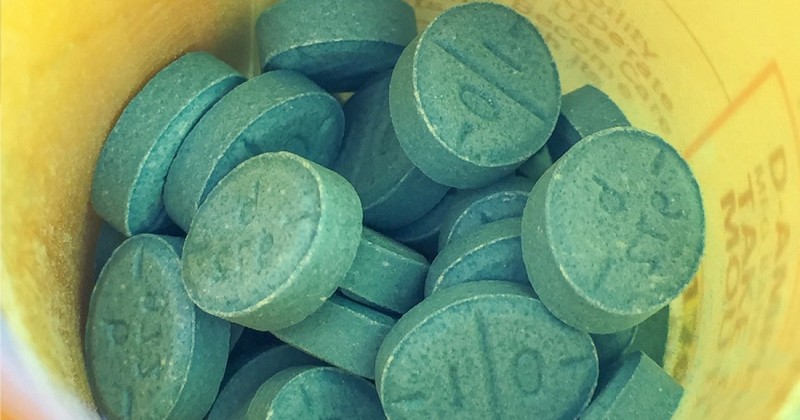Fluphenazine: characteristics and side effects of this drug.

A type of antipsychotic psychopharmaceutical used in the treatment of schizophrenia.
Fluphenazine is an antipsychotic drug indicated for people diagnosed with schizophrenia, other psychotic disorders, bipolar disorder, bipolar disorder, and other psychotic disorders.other psychotic disorders, bipolar disorder, etc. What it does is to block dopamine D2 receptors.
Its particularity is that in addition to being administered orally (in tablet or pill form) it is also marketed in liquid or injectable form. This is why it is also indicated for patients who find it difficult to follow an oral treatment.
Fluphenazine: general characteristics
Fluphenazine is an antipsychotic drug that blocks dopaminergic receptors, decreasing the concentration of dopamine.receptors, decreasing the concentration of dopamine in the brain.
It is indicated for the treatment of schizophrenia and paranoid psychoses, specifically as maintenance treatment in chronic patients who have difficulty following oral therapy (pills). Its action is prolonged.
Mechanism of action
The mechanism of action of fluphenazine is not completely known, although it is known that is related to the blockade of dopaminergic D2 receptors in the limbic system and ganglia. receptors in the limbic system and basal ganglia. This decreases the concentration of dopamine in the brain (as is generally the case with antipsychotics); this effect ameliorates psychotic symptoms since it is known that in schizophrenia (and other psychotic disorders) dopamine is found in excessively high concentrations.
On the other hand, there is a relationship between the antipsychotic potency of the drug and the frequency of extrapyramidal effects. (side effects involving movement disorders) with occupancy of dopaminergic D2 receptors.
Indications and contraindications
Fluphenazine is indicated to treat schizophrenia and other psychotic disorders. It acts on delusional symptoms, hallucinations, hostility, disorganized behavior, etc. It is also indicated for bipolar disorder.
The main contraindications of fluphenazine are having a hypersensitivity to it, having a cortical encephalic lesion, a hepatic lesion, suffering from Parkinson's disease, having prostatic hypertrophy, taking drugs that depress the CNS (Central Nervous System) and being a child under 3 years of age, among others.
In relation to pregnancy and breastfeeding, fluphenazine should only be taken (in pregnancy) if its indication is clearand if the benefits of taking it outweigh the potential risks. As for breast-feeding, it is not recommended, since it is not known whether or not the drug is excreted into breast milk.
Trade name
Fluphenazine is generally marketed under the name "Prolixin".It comes in tablets or lozenges. There are five milligram (5 mg) and 10 milligram (10 mg) tablets. It is also marketed in other formats such as syrup (0.5 mg) and injectable solution (25 mg/ml) [the latter with the trade name "Fluphenazine decanoate".
Other trade names it may carry are: Modecate, Motival and Prolixin Depot.
Side effects
The most common side effects that fluphenazine can produce are: nightmares, insomnia, weakness or tiredness, stomach discomfort, anxiety or nervousness, dry mouthThe most common adverse effects are: nightmares, appetite or weight alterations and skin more sensitive to the sun than usual.
Other adverse reactions that may occur are: nausea, loss of appetite, salivation, sweating, dry mouth, headache, constipation, photosensitivity, dystonia, dyskinesia, akathisia, hyperreflexia, tardive dyskinesia, somnolence, lethargy and pseudoparkinsonism (a Parkinson-like but qualitatively different motor disorder due to a diffuse cortical alteration).
How is it used?
Fluphenazine has several routes of administration; It can be found in tablet (pills) or liquid (elixir and concentrates) form.. This is why we have seen how it is especially indicated for patients who find it difficult to follow an oral treatment (with tablets). Specifically, fluphenazine in liquid form comes with a specially marked dropper for measuring doses.
It is usually taken 2 to 3 times a day (as oral tablets); it can be taken with or without food. Normally, the maximum dose is 20 mg per day in therapeutic treatment.. In more severe patients, however, a dose of up to 40 mg/day is recommended. However, the physician may gradually reduce the dose over the course of treatment if no severe symptoms or adverse reactions to the drug occur.
On the other hand, as is the case with all drugs, a professional specialist should be consulted to resolve any doubts regarding its use, dosage and regarding its use, dosage and contraindications.
Dosage, frequency and duration
As we can see, these treatment parameters will depend on the patient's pathology, age, state of health, etc. However, in general, the recommended dose in most cases (with due nuances) is 0.5 ml per injection, in patients using fluphenazine for the first time (to be administered in the buttock by deep injection); and 0.25 ml daily for 3 weeks in patients over 60 years of age.
Use of antipsychotics
Antipsychotics such as fluphenazine (as well as other types of psychotropic drugs), do not really "cure" the pathology for which they are administered.. Rather, they alleviate the symptoms it produces, improving the patient's quality of life.
Ideally, they should be prescribed in addition to another type of therapy, this time psychological.psychological therapy. On the other hand, the involvement of the patient's relatives is also essential for the patient's evolution, especially in disorders such as schizophrenia, where all areas of the patient's life are usually severely affected.
Other data: relationship with suicide
A study by De Alarcón and Carney (1969) showed a relationship between fluphenazine and suicide; they found that 16 patients diagnosed with schizophrenia and treated with fluphenazine (specifically, fluphenazine enanthate), had subsequently developed depression; moreover, 5 of them committed suicide.
The authors of the study attributed this to a possible depressogenic effect of fluphenazine.
(Updated at Apr 12 / 2024)